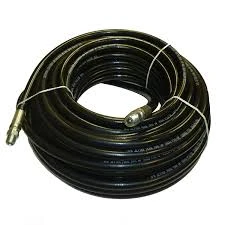manifold gauge set 134a
Understanding the Manifold Gauge Set 134A A Comprehensive Guide
In the realm of automotive HVAC (Heating, Ventilation, and Air Conditioning) systems, the manifold gauge set plays a crucial role in servicing and diagnosing air conditioning systems, particularly in vehicles that utilize R-134A refrigerant. This article delves into the significance of the manifold gauge set 134A, its components, how to use it effectively, and some safety tips.
What is a Manifold Gauge Set?
A manifold gauge set is a diagnostic tool employed by automotive technicians to measure the pressure of refrigerants within an air conditioning system. By providing accurate pressure readings, it aids in determining the state of the HVAC system and identifying potential issues. The manifold gauge set typically comprises three main components the manifold itself, two pressure gauges, and a series of hoses that connect to the AC system.
Components of the Manifold Gauge Set 134A
1. Manifold The manifold serves as the central hub for the gauges and hoses. It often features a color-coded body — usually blue for the low-pressure side and red for the high-pressure side. The manifold also contains valves that control the flow of refrigerant.
2. Pressure Gauges The set is equipped with two gauges. The blue gauge measures low-side pressure, while the red gauge measures high-side pressure. These gauges are calibrated to display pressures specific to R-134A refrigerant, enabling precise diagnostics.
3. Hoses The manifold gauge set usually includes three hoses. The blue hose connects to the low-pressure service port, the red hose connects to the high-pressure service port, and the yellow hose is used for refrigerant transfer or recovery. These hoses are designed to withstand the pressures found in HVAC systems.
How to Use the Manifold Gauge Set 134A
Before using the manifold gauge set, ensure that you understand the basic operational procedures and safety measures.
1. Preparation Start by ensuring that the vehicle’s air conditioning system is turned off. Secure the vehicle on a level surface and set the parking brake.
manifold gauge set 134a

2. Connecting the Hoses Attach the blue hose to the low-pressure port, noted by its larger diameter, and the red hose to the high-pressure port, indicated by its smaller diameter. The yellow hose can be connected to a refrigerant tank or recovery machine.
3. Reading the Gauges With the hoses connected, start the vehicle and turn the AC system to the maximum cool setting. Observe the pressure readings on both gauges. Normal low-side pressure for R-134A should typically be between 25-45 psi, while high-side pressure can range from 150-250 psi, depending on the ambient temperature.
4. Diagnosing the System Analyze the pressure readings. If the low-side pressure is too low, it may indicate a refrigerant leak or a clogged filter. Conversely, high-side pressure that is too high may indicate a blockage or overcharging of refrigerant.
5. Service Procedures Depending on your diagnosis, you may need to add refrigerant, replace components like the compressor or accumulator, or simply evacuate and recharge the system.
Safety Tips
Working with refrigerants and automotive HVAC systems can be hazardous. Here are some essential safety tips
- Wear Protective Gear Always wear safety goggles and gloves when handling refrigerants. The cold temperature of refrigerants can cause frostbite or damage to the skin.
- Avoid Prolonged Exposure Minimize exposure to refrigerants as they can be harmful if inhaled in large amounts.
- Use in Well-Ventilated Areas Work in a well-ventilated space to dissipate any refrigerant fumes.
- Check for Leaks Before connecting hoses, inspect them for any signs of wear or leaks. Faulty hoses can lead to refrigerant loss and improper readings.
In conclusion, the manifold gauge set 134A is an invaluable tool for anyone involved in automotive air conditioning service. By understanding its components and operation, technicians can diagnose and repair HVAC issues effectively, ensuring that vehicles maintain comfort and efficiency. Adhering to safety protocols is paramount to protect oneself and the environment when working with refrigerants. Whether you are a seasoned professional or a DIY enthusiast, mastering the use of the manifold gauge set can empower you to keep the air conditioning systems in vehicles running smoothly.
-
Ultimate Spiral Protection for Hoses & CablesNewsJun.26,2025
-
The Ultimate Quick-Connect Solutions for Every NeedNewsJun.26,2025
-
SAE J1401 Brake Hose: Reliable Choice for Safe BrakingNewsJun.26,2025
-
Reliable J2064 A/C Hoses for Real-World Cooling NeedsNewsJun.26,2025
-
Heavy-Duty Sewer Jetting Hoses Built to LastNewsJun.26,2025
-
Fix Power Steering Tube Leaks Fast – Durable & Affordable SolutionNewsJun.26,2025

